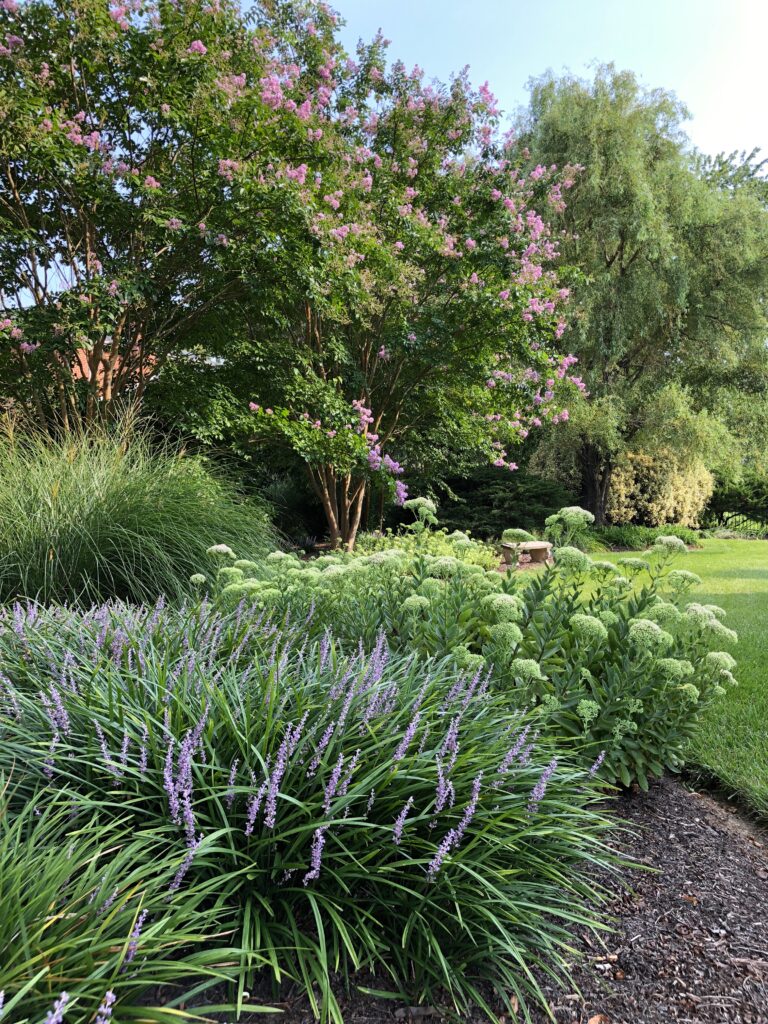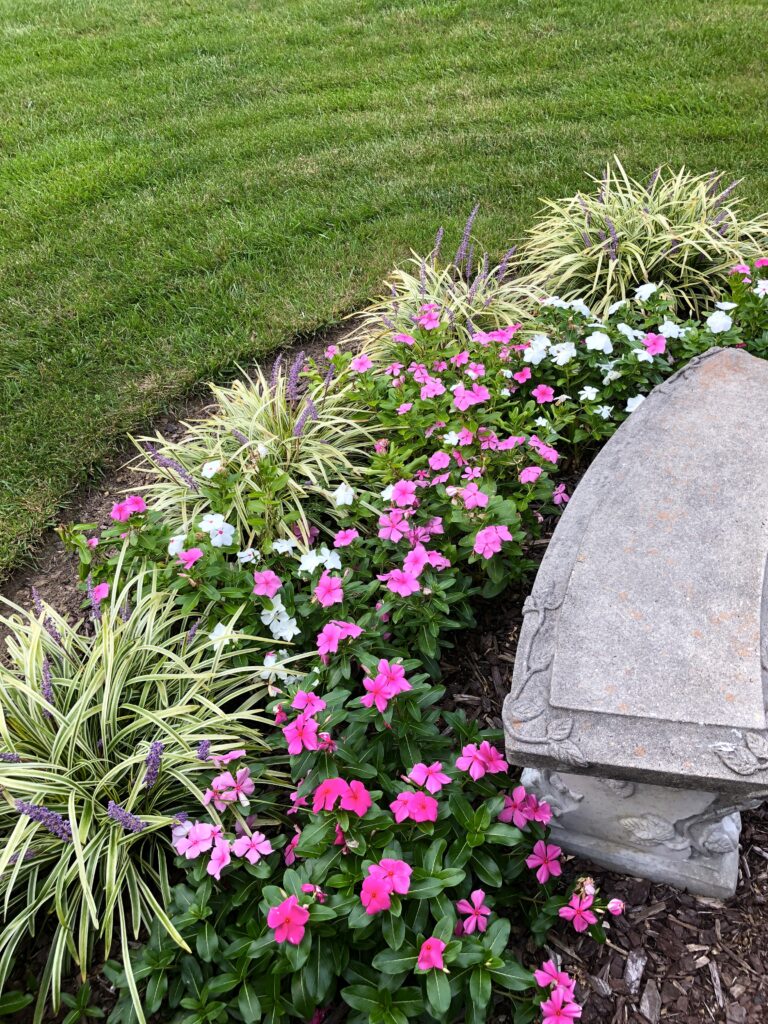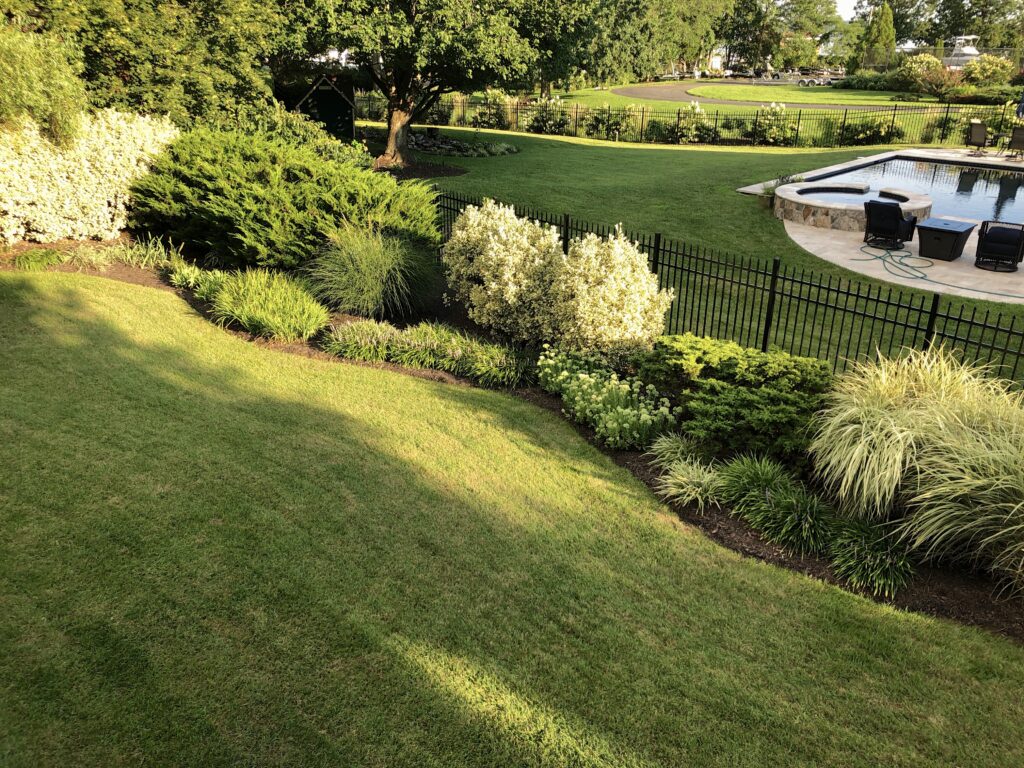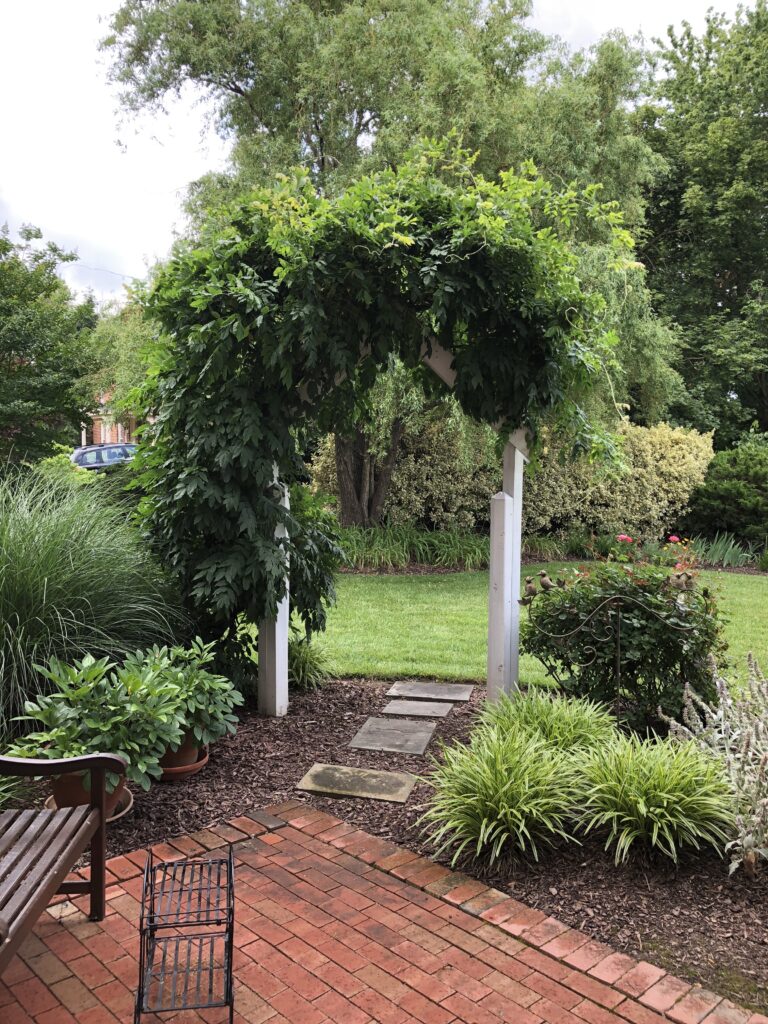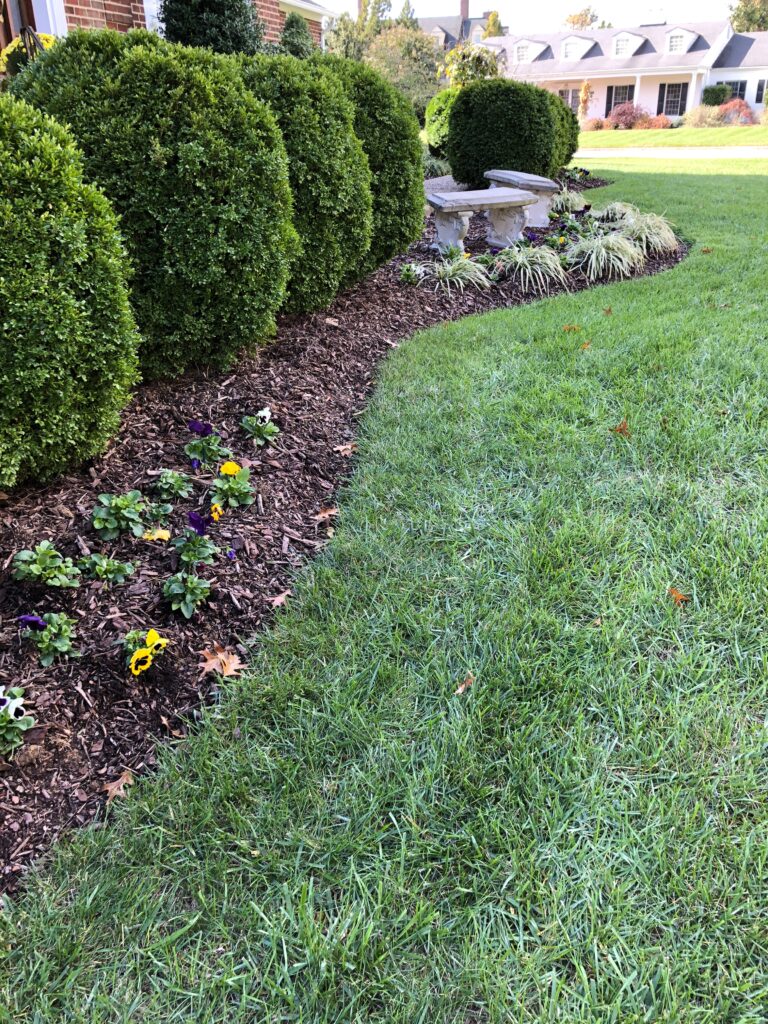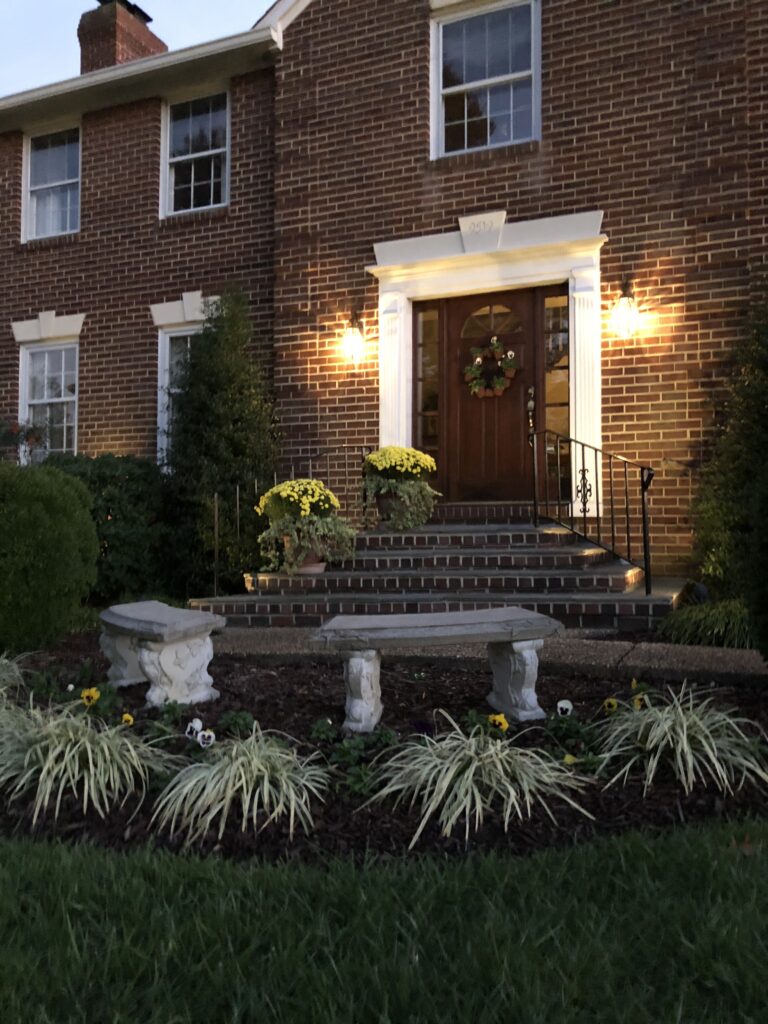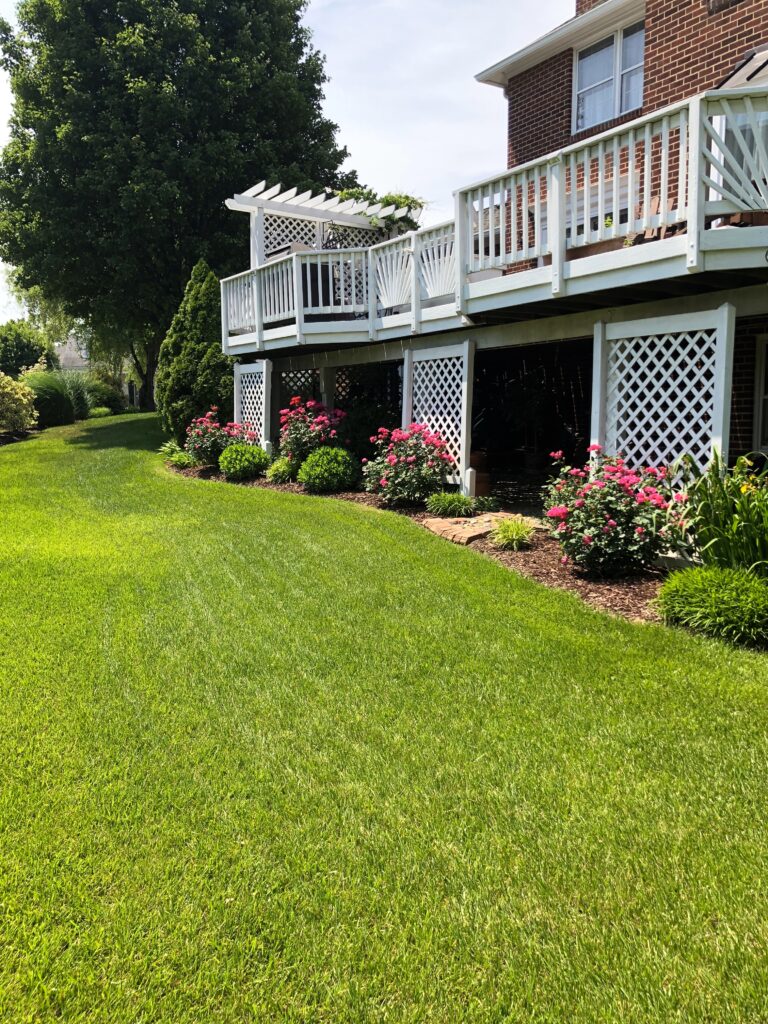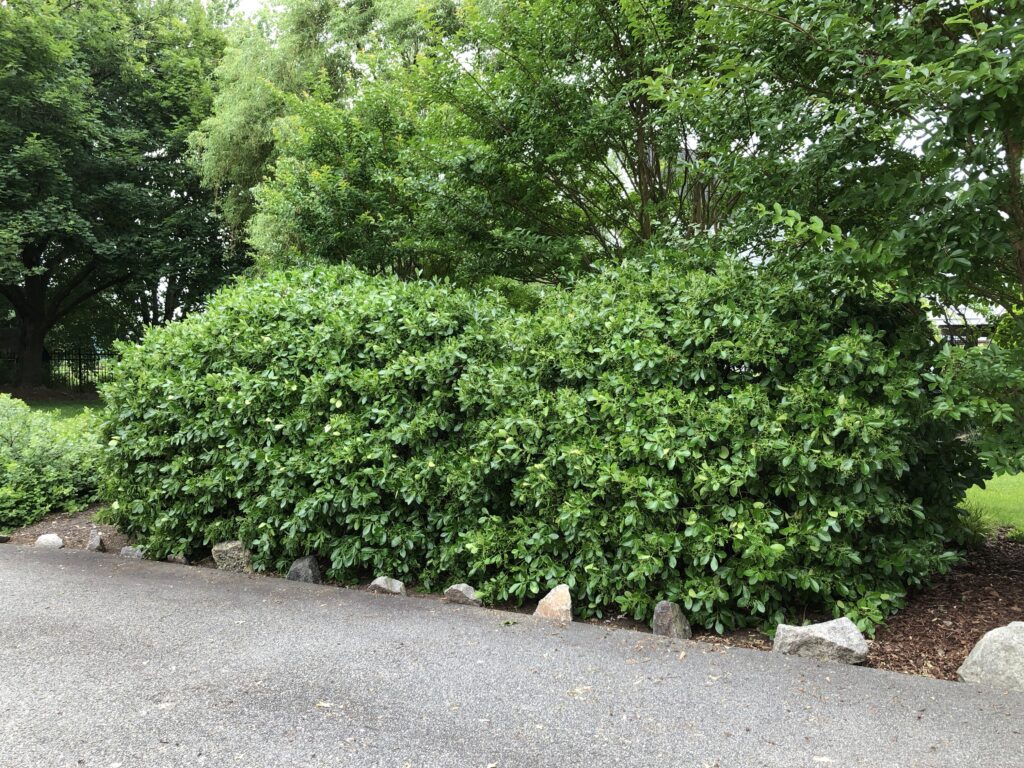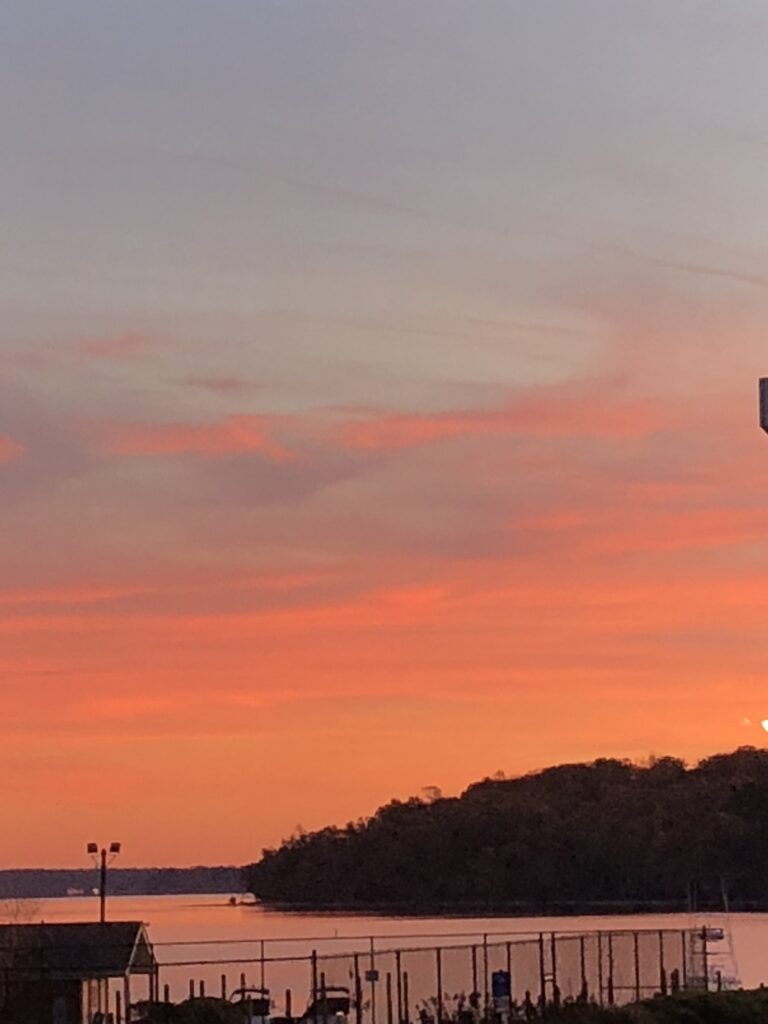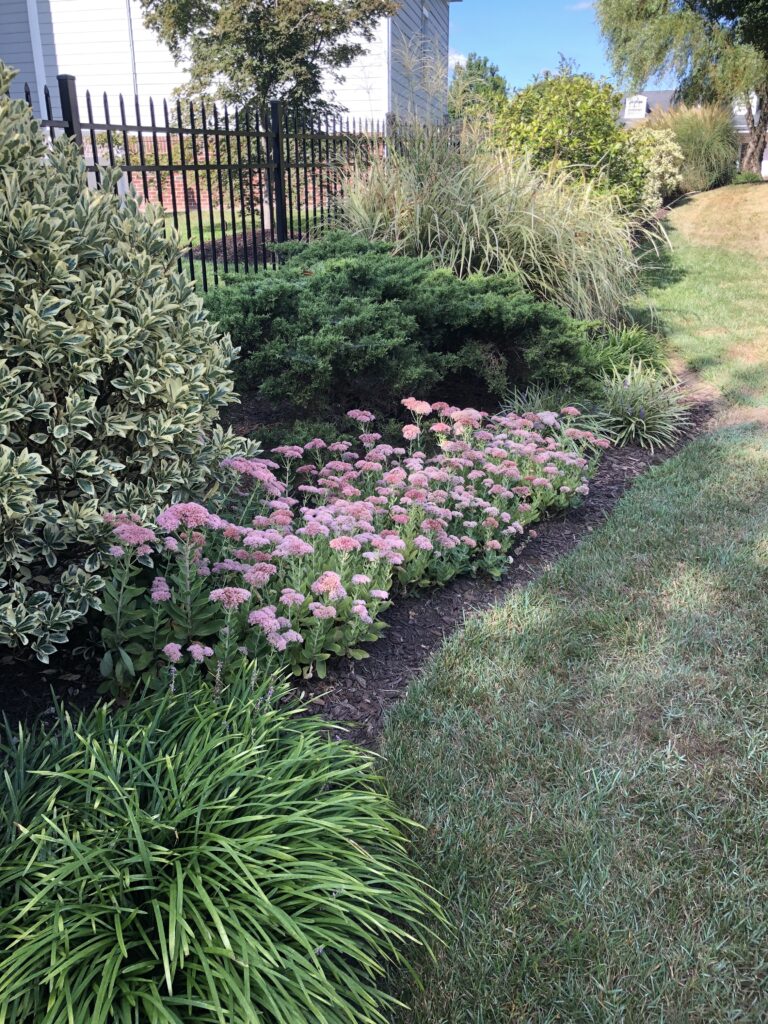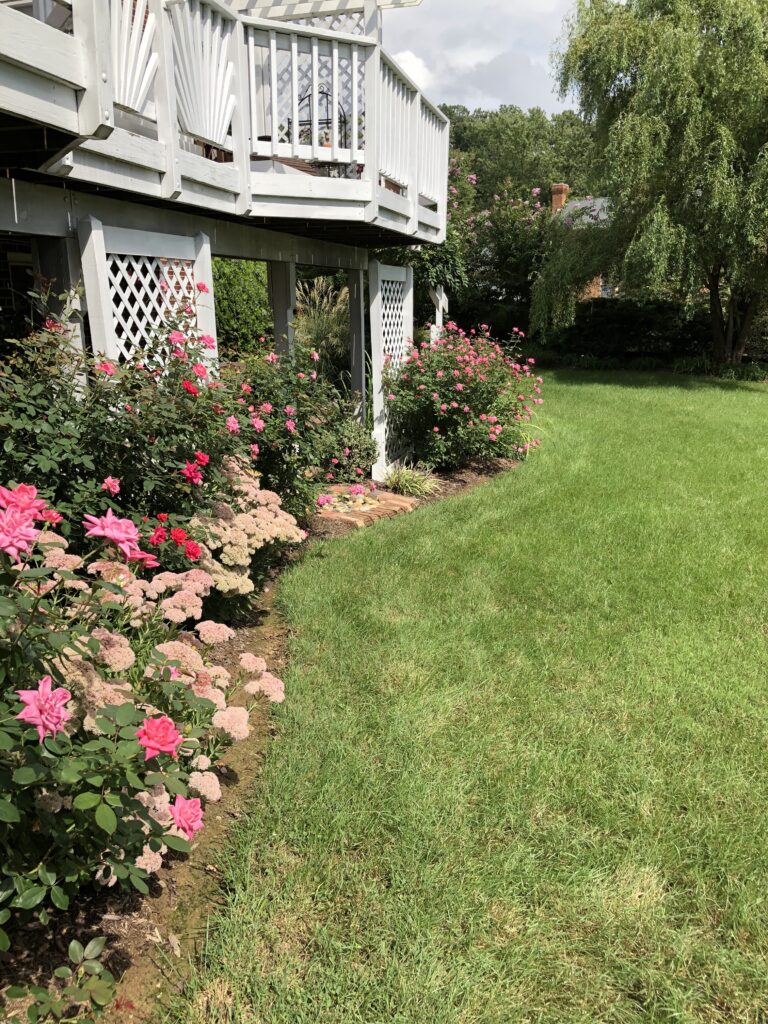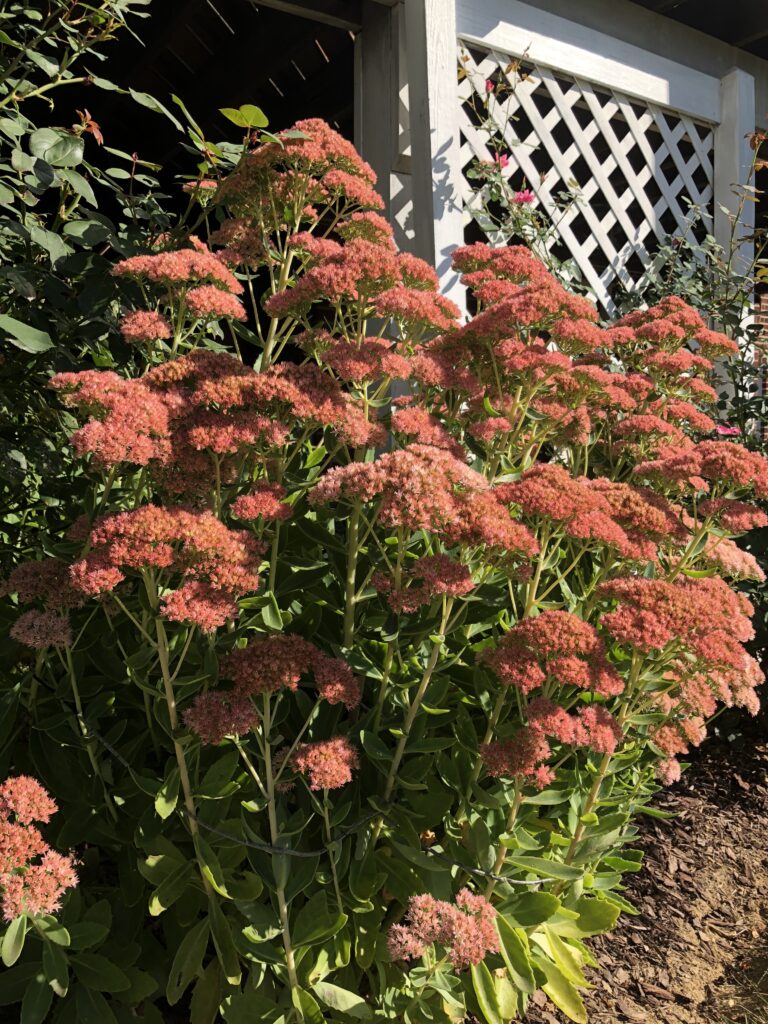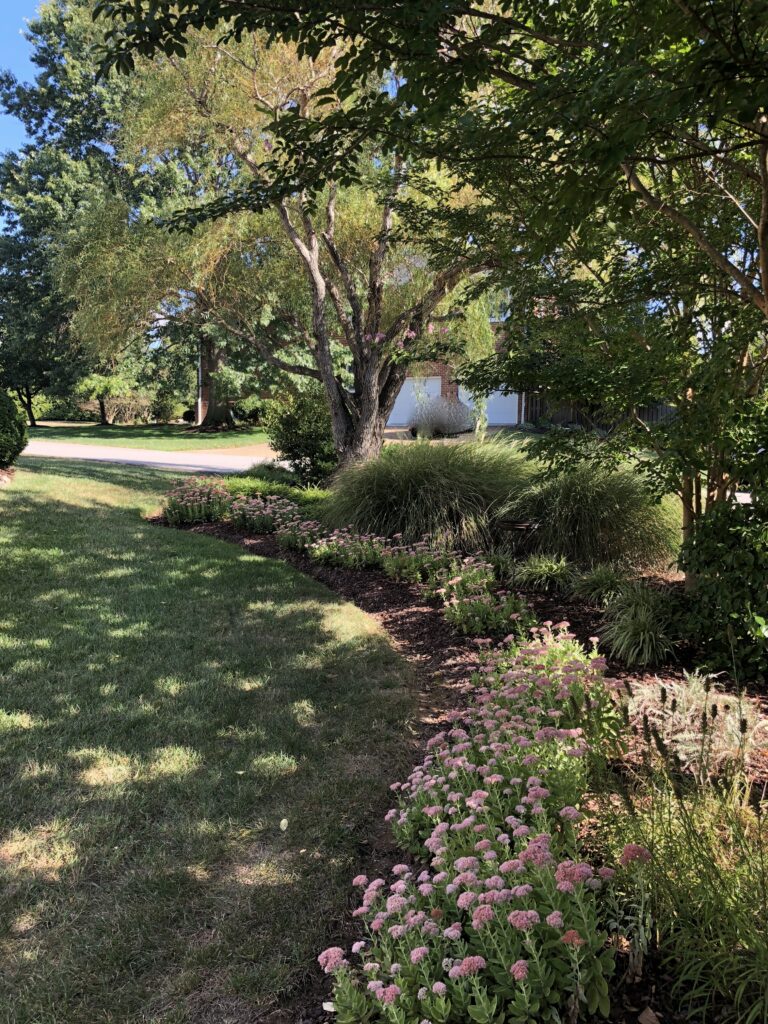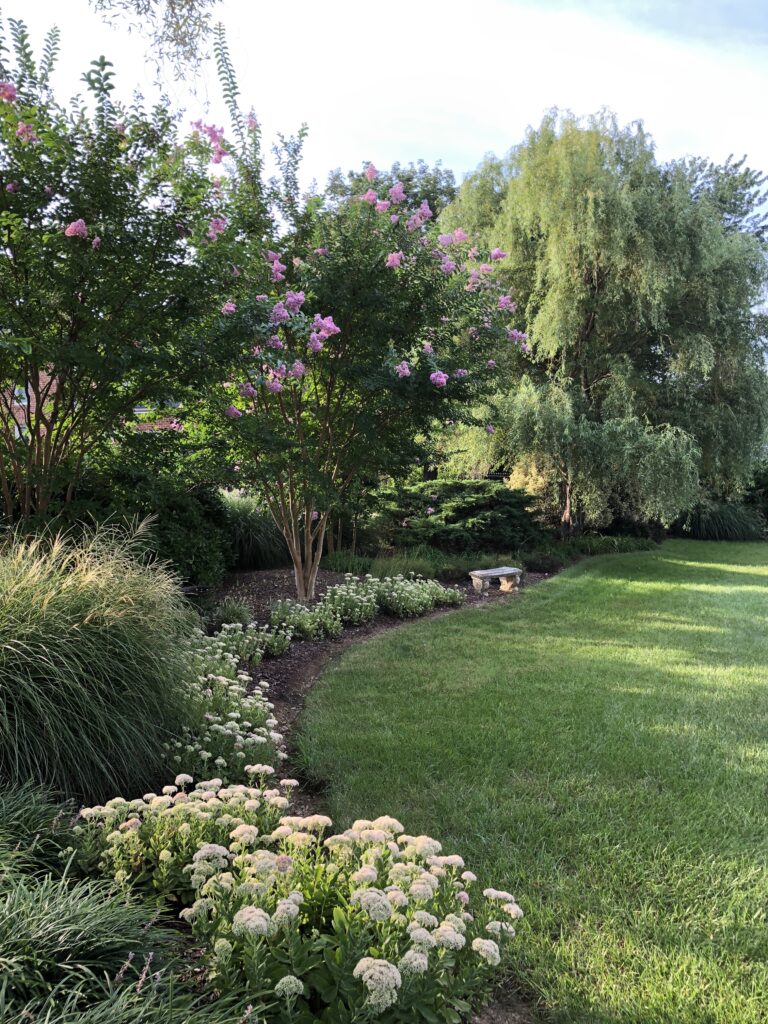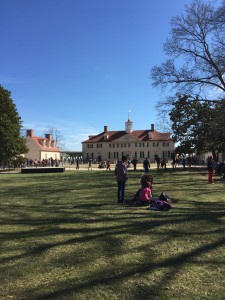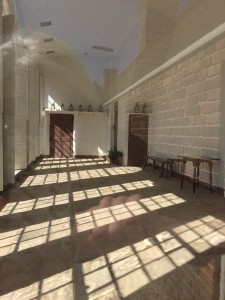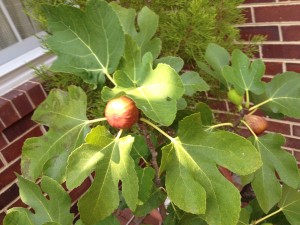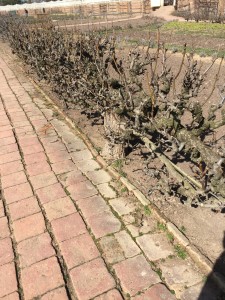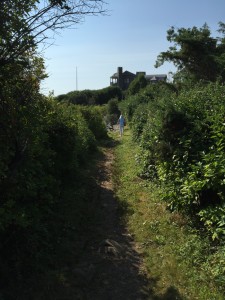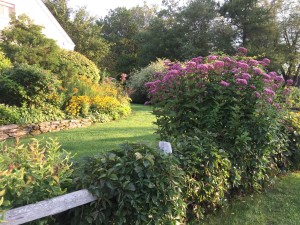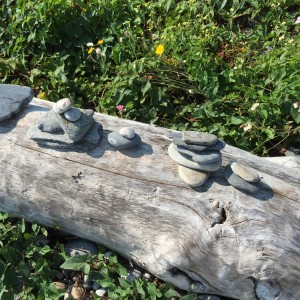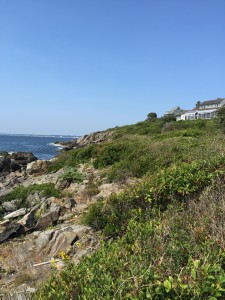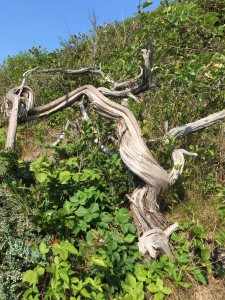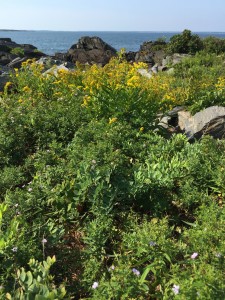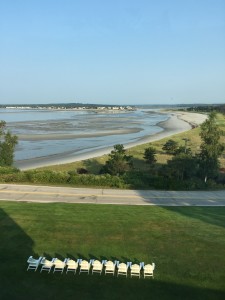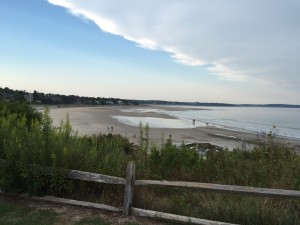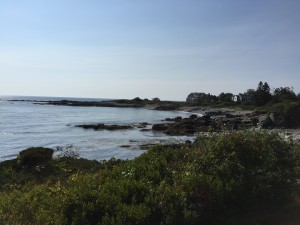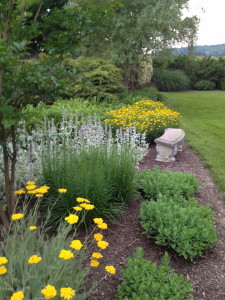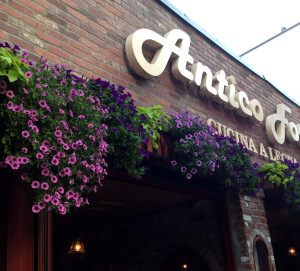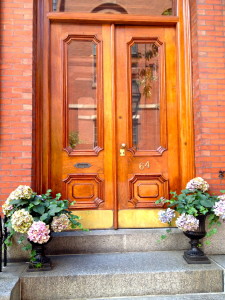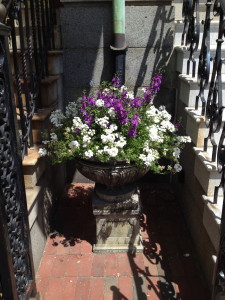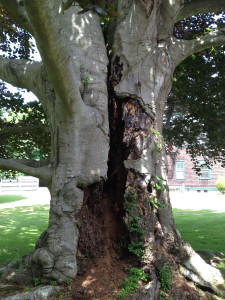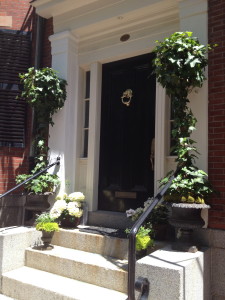
Our resident fox enjoying a nap and a sunbath.
Here it is — the second half of spring already! The garden here is bursting with activity, both flora and fauna. We recently spent a leisurely morning with our fox friend, our feral kitty, the crazy squirrel, duck family, chipmunks and many songbirds to name a few. It’s always an adventure around here!
With the nice weather warming the soil, the garden is growing quickly now, despite the fluke ice storm that deposited an inch of slushy ice two weekends ago. The trees are blooming all out of sync again. Strangely enough, the dogwood was the first to bloom and has held on to her flowers for almost a month.
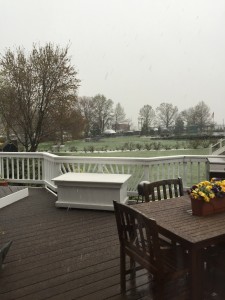
This fluke ice/slush storm was winter’s last hurrah. Most plants had started to get their new spring leaves, so this storm was most unwelcome.
We have finally turned the corner on frost and freeze warnings, so I’ve been planting herbs and veggies. It makes me so happy to see how many heirloom varieties are now being offered in the garden centers! I’m trying out many old fashioned varieties this year, so I will have some fun things to report back on.

The flowering trees were a welcome sight, and the dogwood is still blooming!
I’m so glad that the trees came through the winter alright in this region. We had such a strange autumn that many of the National Cherry Blossom trees bloomed around Christmas, about 1/4 of them! The affected trees didn’t rebloom, but thankfully they are all okay.

This patch of lily of the valley has doubled in size this last year. The scent is wonderful!
The same happened with many of the bulb flowers. The hyacinths that I have in my garden had sprouted at Christmastime, so they became freezer burned by the cold of winter and their flowers were all deformed this time around. Thankfully the daffodils had not gotten as big and were fine. On a better note, the patch of lily of the valley is looking the best that it ever has, and I’m so glad to report that it is covered in fabulously scented flowers. This is a fantastic ground cover with tons of old fashioned appeal, and will grow nearly anywhere, so keep that in mind if you are looking for something to fill a tough spot.
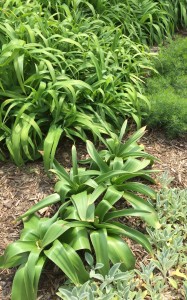
Not in bloom yet, but this area is planted with large masses of flowers. I can’t wait to see the allium in bloom!
The allium bulbs are getting so huge as well. They were a gift at Christmas, so this is their first year. I will post some pictures when they start to bloom. I love how interesting the flowers are, and I planted them in a wave, between masses of iris, daylily, lamb’s ear and coreopsis. It’s getting so full that it should look amazing when they are all in bloom. While they are newly emerging, this is the perfect time to round up the edges on hosta, grasses, liriope, and lily to get them in shape for the new growing season. I like to do this now, rather than in autumn because they send out shoots underground over the winter months, and can start to look a bit messy otherwise.
On other fronts, I’m continuing to work on the storm window project, and I have a tip for you on fixing discolored brick. Years ago, way before we bought this house, someone had used some crummy paint on the trim work. It left long streaks of ugliness on the brick. I had tried all kinds of things to remove it short of sandblasting, and nothing could clean it off. My solution — more paint! I picked up half a dozen exterior craft paints in different brick colors and blended them. Just dab them into the offending areas and like magic the stained areas look fresh and clean. I have done this before on the front stairs and many other places on the house. If you didn’t know a stain was there, you never would. I won’t tell, if you won’t! Works like a charm. Give it a try!

BEFORE: ugly white streaks on the brick.

AFTER: Looks like new! Blending a few different brick colors and dabbing it on the stained bricks works great, and it’s easy to do!
I hope you are having a wonderful springtime and getting time in the garden. Here is one last photo, a bird’s eye view picture from the upper window looking out on the neighborhood trees. I just love how many bloomed all at once again this year!
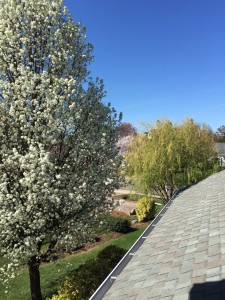
Bird’s eye view of the tapestry of colors of the blooming trees.
